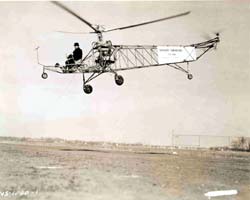|
|
|
The Beginning of a Career After graduating from M.I.T. with a B.S. degree in Aeronautical Engineering in 1929, he began his career as a structural design and test engineer with Berliner Joyce Aircraft in Baltimore, Maryland, predecessor of North American Aviation. In late 1929, he was responsible for the structural design of the fuselage, wing attachments and tail structure of the XP-16, a biplane, two seater fighter for the US Army Air Corp. It was successful, was purchased and produced. In the fall of 1930, he was responsible for the structural design of the fuselage of the XJ-1 and shared design of the wing. It was a single seat biplane for the US Navy, with the upper wing having a gull wing. It performed well but did not go into production due to competition. In 1932, the OJ series of observation and scout aircraft was begun and Russ was the structures lead man, designer for the landing gear, fuselage and tails. The OJ series was in production from 1932 to about 1935. It was a very successful airplane that was convertible from sea planes to land planes. In late 1932 and early 1933, he was involved in the XFJ-2 fighter project, but with the depression there were no orders. From 1933 to 1935, Russ worked for North American Aviation as senior structures design engineer and later assistant chief of structures. When in 1935, North American moved to California, Russ began his career with United Aircraft Corporation, in Stratford, Connecticut, in the Sikorsky division, as chief of structural design for the hull of the four engine flying boat, the XPBS-1. In mid project, he was made project engineer responsible for the whole XPBS-1 design. He continued to work on other flying boat projects until late 1938, when Mr. Sikorsky wanted to build a practical helicopter. Russ was his chief project engineer with a staff of 10 to 12 engineers.
A Rewarding Career with Vought Other Prestigious Positions and Awards
|

 He was also chief of quality control and in charge of all preflight operations. Thus, Russ was the chief project engineer on the world’s first successful helicopter, the VS-300. During development, Mr. Sikorsky himself was the test pilot and Russ and Bob Labinsky would hold guy wires on each side of the machine to protect him against roll over. In the winter of 1939, Russ was the project engineer and in charge of design on a proposal to the US Army Air Corp. for their first helicopter, the R-4 program.
He was also chief of quality control and in charge of all preflight operations. Thus, Russ was the chief project engineer on the world’s first successful helicopter, the VS-300. During development, Mr. Sikorsky himself was the test pilot and Russ and Bob Labinsky would hold guy wires on each side of the machine to protect him against roll over. In the winter of 1939, Russ was the project engineer and in charge of design on a proposal to the US Army Air Corp. for their first helicopter, the R-4 program.